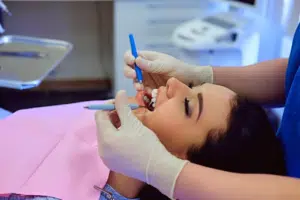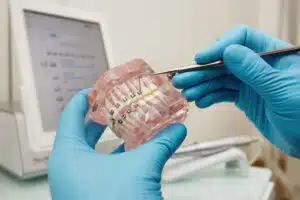Virtual Orthodontics: Can You Really Get Straight Teeth Without Leaving Home?
Straightening teeth used to mean months of office visits, wire adjustments, and waiting room time. Virtual orthodontics has changed that. Patients can now get evaluations, progress checks, and even full treatment plans without stepping into a clinic. With digital tools and remote monitoring, the idea of managing your smile from home no longer feels far off. Still, questions remain about how well it works and who it’s right for. Virtual orthodontics opens new doors, but it also comes with limits you need to understand.
What Is Virtual Orthodontics?

Virtual orthodontics refers to the process of receiving orthodontic consultations, check-ins, and sometimes even treatment guidance without visiting a clinic in person. Patients use phones, webcams, or specialized apps to connect with providers.
The goal is to make orthodontic care more accessible, especially for busy patients or those who live far from a clinic. These services can include:
-
Initial consultations
-
Treatment planning discussions
-
Progress monitoring
-
Follow-up questions or concerns
While some companies offer mail-order aligners without ever involving a traditional clinic, others use virtual orthodontics to complement in-person care.
How the Process Works
Step 1: Online Consultation
Most providers start with a form or questionnaire on their website. Patients upload photos of their teeth and answer basic questions about their goals and dental history. Some platforms use AI to assess spacing, alignment, and bite, but a licensed orthodontist in Tacoma always reviews the final plan.
Step 2: At-Home Impressions or Digital Scans
Some companies mail impression kits to help create custom aligners. Others invite patients to visit an office once for a digital scan. Clinics that offer hybrid care may schedule this appointment at the beginning, then shift to virtual check-ins.
Step 3: Treatment Plan Approval
Once the impressions or scans are reviewed, the orthodontist outlines a plan. Patients receive a 3D preview of how their teeth will move over time. The plan also includes instructions on how often to change aligners and how long treatment should last.
Step 4: Regular Monitoring
Patients send photo updates or short video clips every few weeks. These updates allow the orthodontist to check progress and adjust the plan if needed. Many systems include alerts or reminders to help patients stay on track.
Step 5: Retainers and Final Check-In
Once treatment ends, providers send retainers to maintain the new position. Some include a final video call to confirm results and give long-term care tips.
Who Can Benefit from Virtual Orthodontics?
Virtual orthodontics works best for people with mild to moderate alignment issues. These include:
-
Small gaps between teeth
-
Slight crowding
-
Minor overbites or underbites
-
Shifting teeth after previous orthodontic treatment
Patients with more advanced cases may still need in-person treatment with braces, appliances, or jaw adjustments. A proper review by an orthodontist helps determine eligibility.
Benefits of Virtual Orthodontic Treatment
Convenience
Busy schedules make it hard to fit in regular appointments. Virtual systems cut down on office visits and allow patients to check in without missing work or school. Most photo updates take just a few minutes.
Comfort
Many patients feel more relaxed sharing questions online instead of in a clinical setting. They get answers quickly without waiting days for a slot.
Accessibility
People in rural areas often travel long distances for dental care. Virtual options help them get started and stay in touch with their provider from home.
Lower Cost
In some cases, virtual orthodontics reduces treatment cost. Fewer office visits and simplified systems can make clear aligners more affordable.
Limitations and Risks
Lack of Hands-On Care
Orthodontists adjust wires, check jaw growth, and spot small issues in person. Virtual systems can’t always catch the same details. A bite that looks fine in a photo might feel off in real life.
Misalignment or Delayed Results
If patients skip photo updates or wear aligners inconsistently, the treatment plan may fall behind. In-person checks help correct these problems early. Virtual-only plans often rely on self-reporting.
Not Suited for All Cases
Severe crowding, bite problems, or jaw growth issues need more than aligners. Braces in Tacoma and other tools guide teeth and jaws in ways clear aligners can’t. Virtual programs may oversimplify the treatment path.
Limited Supervision
Some mail-order aligner companies skip live consultations. That means no face-to-face interaction with a licensed orthodontist. Without direct guidance, patients might not get the results they expect.
Hybrid Orthodontic Models
Many traditional clinics now blend in-person and virtual care. These hybrid models allow flexibility while keeping quality in check. Patients visit the clinic for scans, appliance placement, or major adjustments, then use virtual check-ins to stay on track.
This approach balances safety and convenience. It gives orthodontists the chance to step in when needed but respects the patient’s time and schedule.
What to Ask Before Choosing Virtual Orthodontics
-
Will a licensed orthodontist create and monitor my plan?
-
What happens if I lose or break an aligner or Invisalign in Tacoma?
-
How often do I need to send updates?
-
Can I contact someone if I feel discomfort?
-
Is there an in-person option if something goes wrong?
-
What type of retention plan do you offer once treatment ends?
These questions help set clear expectations and avoid confusion later.
The Role of Technology
Virtual orthodontics depends on digital tools to track progress. Apps remind patients when to switch aligners. Photo uploads allow orthodontists to compare progress against the treatment plan.
Some platforms use smart sensors built into the aligners. These sensors track wear time and give alerts if the patient falls behind. Others use AI to flag potential issues in photos, which a human then reviews.
While these tools help keep treatment on course, they don’t replace the insight of a trained orthodontist. They work best as support, not a replacement.
What the Future Looks Like
The demand for virtual care continues to grow. Patients want services that fit into their lifestyle without lowering standards. Clinics that blend strong planning with digital support will likely lead this shift.
Virtual orthodontics won’t replace in-person care entirely. It will become one part of a larger process. Providers will find better ways to combine check-ins, planning, and follow-ups to serve patients in new ways.
Final Thoughts
Virtual orthodontics can work for the right patient. Clear aligners in Tacoma, mobile apps, and digital scans have made it possible to straighten teeth without frequent office visits. But success depends on careful planning, consistent use, and real oversight.
Patients should choose a provider who offers support throughout the process, not just at the start. A mix of digital convenience and professional care gives the best chance for a healthy, straight smile.
Why Pacific Northwest Orthodontics Chooses In-Person Care with Digital Support
We believe orthodontic treatment works best when patients receive direct, in-person attention. At Pacific Northwest Orthodontics, our team doesn’t offer fully virtual orthodontics because we know real results require hands-on care. Every adjustment, scan, and check-up gives us the chance to catch small changes and keep your treatment on track.
That said, we use advanced digital tools to improve the in-office experience. Our iTero scanner creates fast, precise 3D images of your teeth. We also use digital models to plan your treatment and track progress with accuracy you can see.
You’ll still benefit from convenience and modern technology, but without giving up the quality that comes with face-to-face care. We make every visit efficient and focused, so you get the results you want with the support you need.
Call (253) 472-7788 or visit pnwortho.com to schedule a consultation at one of our locations in Tacoma, Federal Way, or Tukwila.




